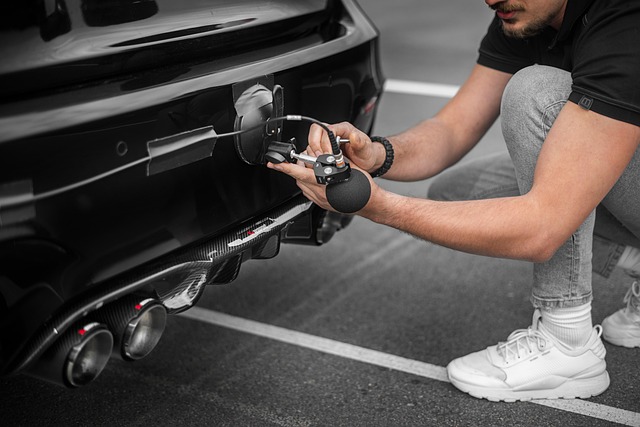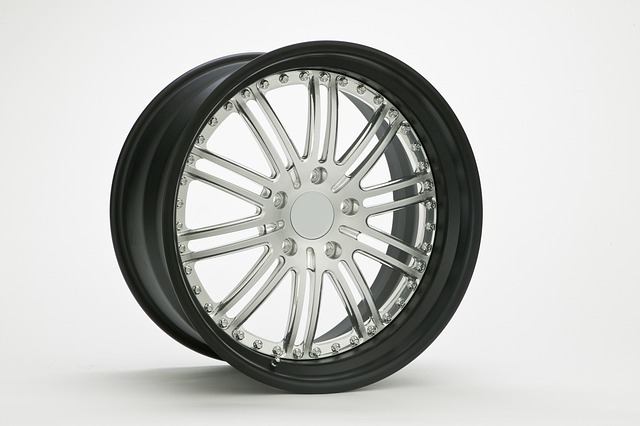Looking to register your car in California? This comprehensive guide walks you through the entire process, ensuring a smooth transition. From understanding the DMV’s VIN verification process to gathering essential documents and passing the required smog test, we’ve got you covered. By following these steps closely, you’ll be on your way to securing your vehicle’s registration in no time, saving you time and hassle. Let’s dive into the details.
- Understand the DMV VIN Verification Process
- Gather Required Documents for Car Registration
- Complete the Application for Vehicle Registration
- Pass the California Smog Test (if applicable)
- Pay the Registration Fees and Obtain Your License Plate
Understand the DMV VIN Verification Process

When registering your car in California, understanding the DMV VIN verification process is crucial. The Department of Motor Vehicles (DMV) requires a vehicle identification number (VIN) inspection to ensure that your car meets safety and emissions standards. This step involves verifying key information about your vehicle through its unique VIN code. A mobile vin inspection or using a mobile vin verifier can simplify this process by allowing the verification to take place at your convenience, whether you’re at home, work, or on the road.
During the VIN inspection, a trained professional will check various components of your car, including its engine, safety features, and emissions control systems. They’ll compare this information with what’s listed on the vehicle’s title and other official documents to ensure accuracy. This meticulous process helps ensure that only safe and compliant vehicles are allowed on California’s roads, protecting both drivers and the environment.
Gather Required Documents for Car Registration

Before you start the car registration process in California, it’s crucial to gather all the necessary documents. The first step involves confirming your vehicle’s identity through a DMV VIN verification. This requires the Vehicle Identification Number (VIN) from your car, which can typically be found on the driver’s side door frame or in the car’s manual. Alongside this, prepare your proof of residency, such as a utility bill or lease agreement, and have your driver’s license or state ID card ready for inspection.
For added convenience, many drivers opt for a mobile VIN verifier to streamline the initial verification process. These tools make it easy to check your vehicle’s history and ensure it meets California’s requirements before visiting a DMV office. A vin inspection is a quick and efficient way to start the registration journey, ensuring you have all your documents in order when you arrive at the DMV.
Complete the Application for Vehicle Registration

To begin the registration process, you’ll need to complete the Application for Vehicle Registration form. This crucial document requires accurate and up-to-date information about your vehicle. Make sure to include details like the make, model, year, and the unique Vehicle Identification Number (VIN). The VIN is a vital piece of data used for identification and verification, so ensure its accuracy during the dmv vin verification process.
When filling out the form, be prepared to provide evidence of your vehicle’s insurance, as well as personal documentation such as a valid driver’s license and proof of residency. Additionally, if you’re opting for a mobile vin verification or using a mobile vin verifier, make sure to have the necessary tools at hand, as these services streamline the inspection process, allowing for quicker registration.
Pass the California Smog Test (if applicable)

In California, registering your car involves a few key steps, including ensuring your vehicle meets environmental standards. If your car is model year 2001 or newer, it must pass a California Smog Test as part of the registration process. This test, conducted at a certified smog check facility, verifies that your vehicle’s emissions control system is functioning properly. Before scheduling your smog test, ensure you have all necessary documents and your vehicle’s registration fee ready.
The DMV (Department of Motor Vehicles) in California offers several options to facilitate this process, including the use of a mobile VIN verifier. A mobile vin inspection service allows you to verify your car’s Vehicle Identification Number (VIN) from the comfort of your home or nearby location. This not only saves time but also ensures that all necessary documents and standards are met before proceeding with registration.
Pay the Registration Fees and Obtain Your License Plate

After completing the registration application and providing necessary documents, it’s time to pay the registration fees. The California Department of Motor Vehicles (DMV) charges a base fee for vehicle registration, with additional costs based on your vehicle type and emissions status. You can pay online or visit a local DMV office. Once the payment is processed, you’ll receive your license plate assignment details, which include the plate number and where to pick up your physical plates.
Obtaining your license plates involves a quick process known as VIN (Vehicle Identification Number) verification. This typically includes a mobile vin inspection or mobile vin verification, where a DMV inspector confirms the vehicle’s identity and checks for any outstanding issues through the VIN. After successful verification, you can collect your license plates at the designated location, ensuring your car is legally registered and ready to hit the California roads.
Registering a car in California involves several steps, from understanding the DMV’s VIN verification process to gathering essential documents and passing a smog test. By completing the application for vehicle registration, paying relevant fees, and obtaining your license plate, you’ll be legally registered and ready to hit the road. Remember, a smooth registration process ensures smoother driving ahead, so follow these steps diligently.
